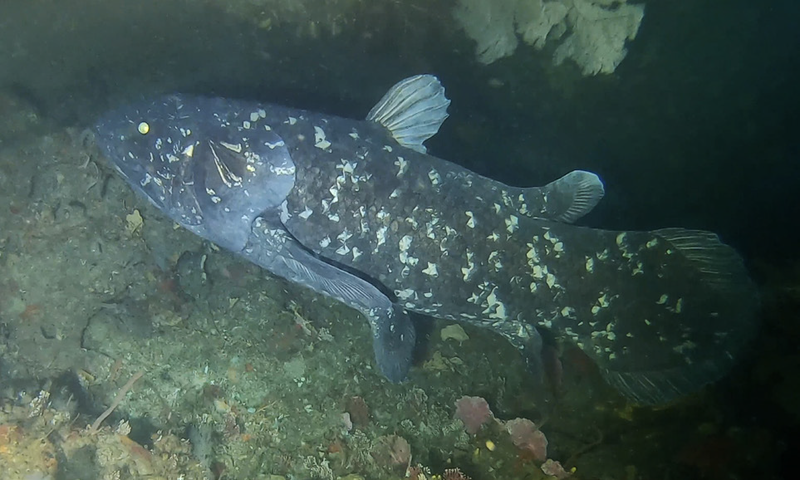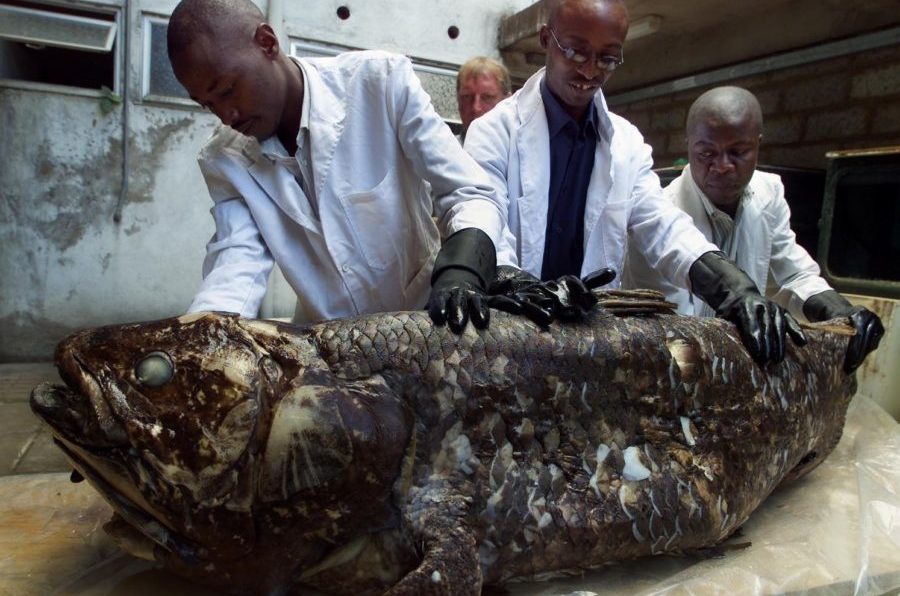The coelacanth is a fish found near the Comoro Islands off the east coast of Africa. This ‘living fossil’ can grow 2 meters (6 and a half feet) long and live 100 years old.
The following written content from Alex Viveros

Few animals live as long as humans do. The West Indian Ocean coelacanth (Latimeria chalumnae), an endangered species of fish that can grow to 2 meters long and weigh about 100 kilograms, might be a rare exception. A new study finds the underwater giant may live to be 100 years old.
To arrive at that figure, researchers counted tiny, ringlike calcium structures on the scales of coelacanths preserved in a French museum. They discovered that, like tree rings, a new calcium ring forms every year. By counting the rings, the team found the oldest specimen was 84 years old. But the researchers believe some individuals could live as long as 100 years.
In addition to having one of the longest life spans of any marine fish, the study, published today in Current Biology, also found that coelacanths age slowly and do not reach sexual maturity until about 40 to 60 years old. That would be like humans reaching puberty at middle age.
The findings could help explain why there are so few coelacanths. The fish were once thought to be extinct and are often referred to as “living fossils” because of their similarity to prehistoric fish. Because they take so long to reach reproductive age and have relatively few offspring, coelacanths that die early in life may not be able to replace their population fast enough. Read more from Science





